Several years ago I went on a camping trip near Stephenson, WA. While passing through the town we stopped at
a junk store, and in the back room I found two Sears Christmas catalogs from the 60's. The 1966 catalog was $6,
and the 1969 catalog was $9. I figured $9 was too much, and besides, I could always come back if I wanted to buy
it. Since then I haven't gone back to Stephenson, and I found out that a 1969 catalog will cost $20-$40 on eBay.
So I ponied up the $25 I finally spent to get one, plus I bought a couple more from 1975 and 1976.
| In the 1966 Sears catalog they list computers on page 483 in the toy index. Turning to that page I found a toy
touch tone telephone, several "Electric Gadgetry" kits, and an analog computer that will "solve
math electronically." "Multiplies, divides, .. calculates powers, roots, logarithms with amazing speed."
It turns out that this is just an electric version of a slide rule using a couple of potentiometers (knobs) and
a meter for a readout. |
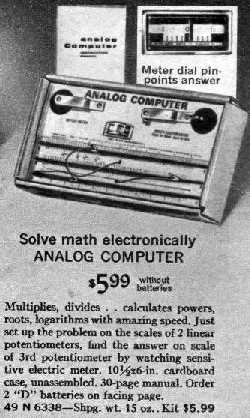 |
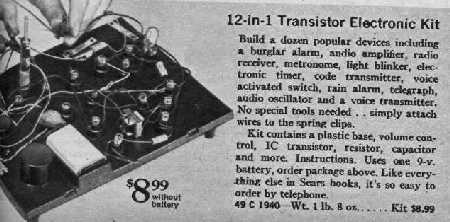
In the 1969 catalog I didn't really find anything at all that mentioned computers. I thought this was surprising
because in my mind this was the era of the space race, and the future was happening then |
| Moving forward to 1975 we begin to see the beginnings of civilization as we know it. They have a five function
digital electronic calculator for only $11! And the advanced scientific calculator (designed for students, engineers,
and architects) is only $40 cash. You can have pi at touch of a button. Another giant leap forward is the
first appearance of Pong. I remember seeing the video game Space War in the mall in 1975. It cost a quarter
per person when pinball games only cost a dime (3 plays for a quarter), and you had to have two people to play
Space War. But to actually own Pong, for a mere $130, and to be able to hook it up to your TV and play in the luxury
of your own home? Either you thought this was heaven, or the beginning of the end of the world. |
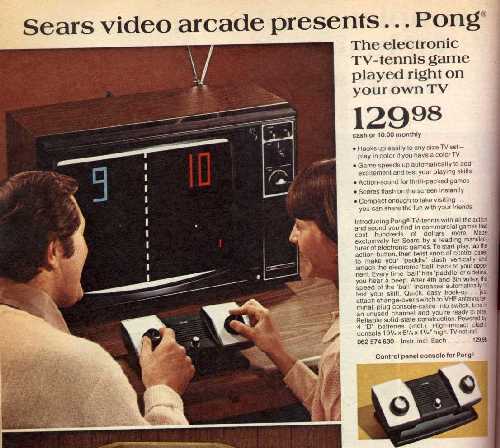 |
|
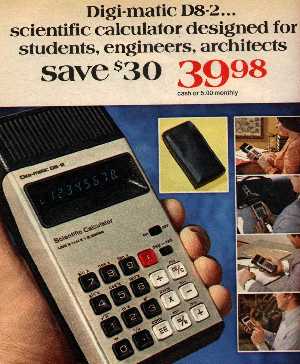
|
In some ways, it was the beginning of the end. A year later the '76 Sears catalog has four digital calculators
including one for kids; a full page of electronics kits that include transistors and diodes; and to top it off
two pages of Pong IV, Super Pong, Hockey Pong, and Super Pong IV advertising any game for less than $100.
The explosion of video games, from 0 in 1969, to four in 1976, to uncountable numbers in 1980 was just one of the
benefits of the Space Race. As NASA scientists (and others) worked to get transistorized electronics smaller and
smaller, they came up with the Integrated Circuit. For a while people would call them ICs, but now we just say
"chip." http://www.hq.nasa.gov/office/pao/History/taskgrp.html |
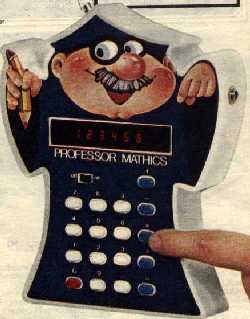 |
Now if you visit a Toys 'R' Us you'll find that half of the store is devoted to computer or video games. Half of
what remains are toys embedded with sound chips or chip driven lights. LCD digital watches have become disposable,
and greeting cards contain more memory than the average school computer did in 1969. Everyone in the US knows about
the Internet, 33% of them have it in their homes, and another 33% use it regularly. The fact is, that from 1969,
to 2000, computers have invaded every aspect of our lives. In the 90's Sears finally gave up their catalog to focus
on web pages and sales through other avenues. |
|




